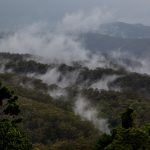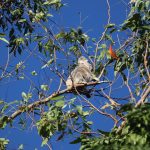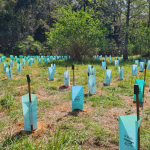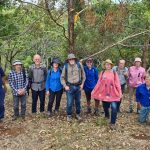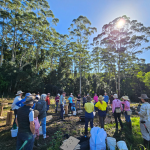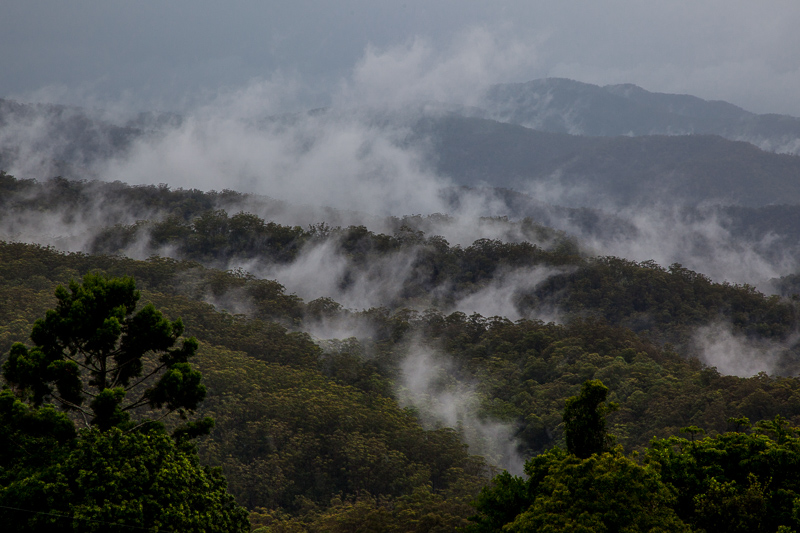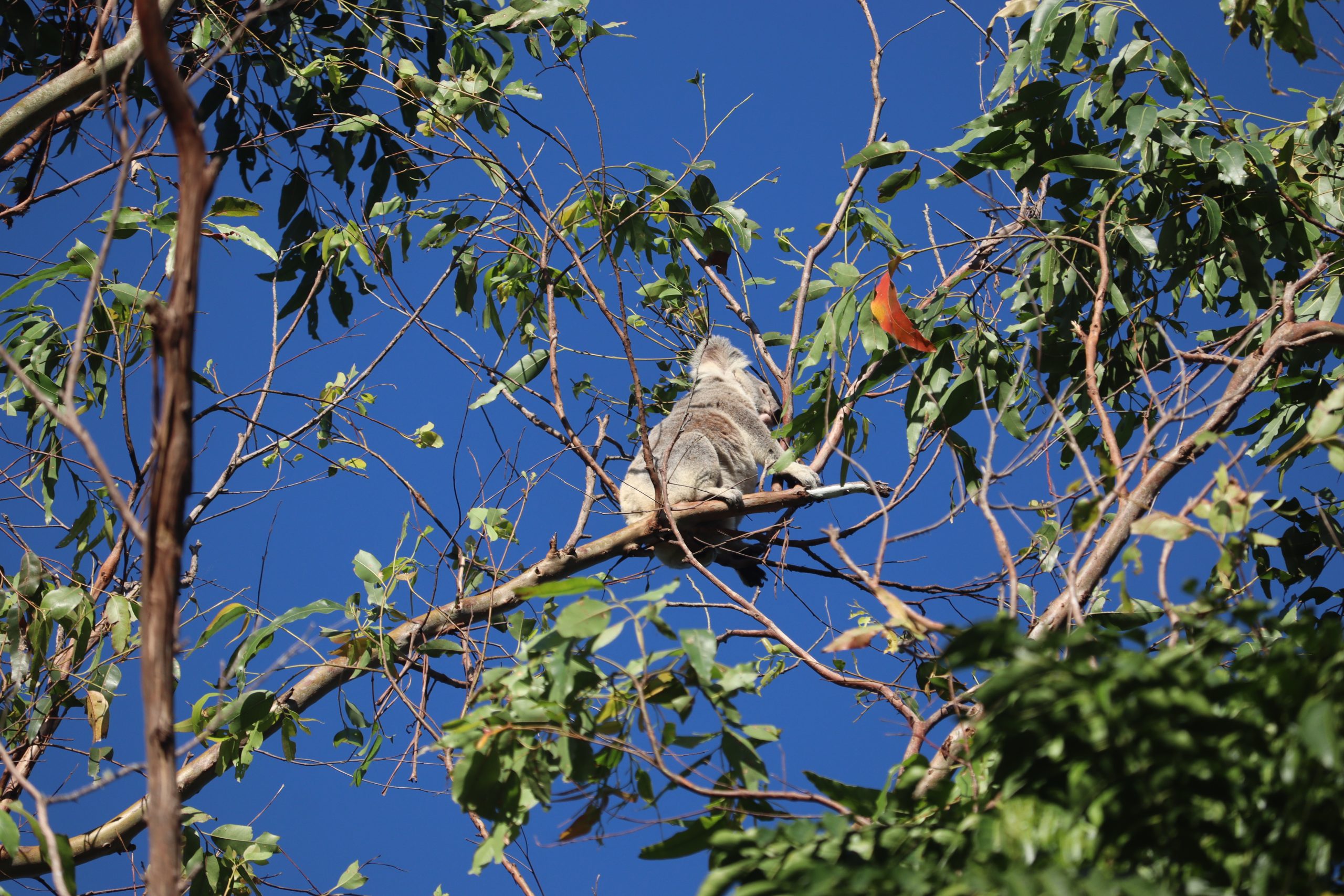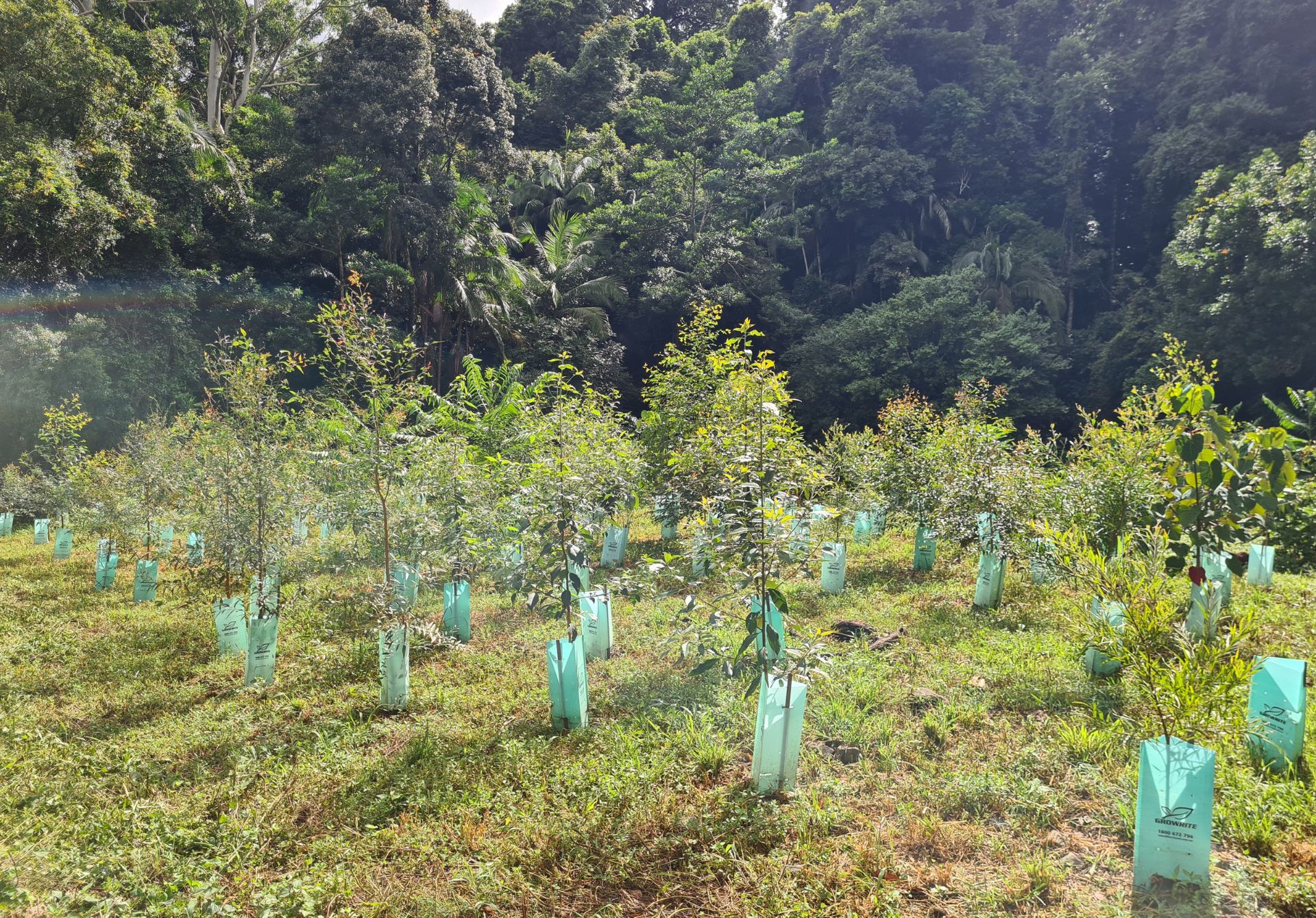Tree planting is one of the most impactful actions you can take to care for our planet, support native wildlife and build stronger communities. At Hinterland Bush Links, we see the value of this work every day through thriving vegetation, reconnected habitats, and smiling volunteers coming together for a common cause. Whether you’re new to the idea or a long-time advocate, here’s a look at why planting trees matters more than ever.
Restoring Biodiversity in Our Hinterland
Native trees are the backbone of healthy ecosystems. They provide food, shelter, and safe passage for a wide range of species, including our iconic and vulnerable koalas and a host of threatened species across the Sunshine Coast Hinterland region like the Mary River Turtle, Richmond Birdwing Butterfly, Giant Barred Frog, Cascade Treefrog, Glossy Black-Cockatoo, Eastern Curlew, and the Greater Glider.
Habitat loss and fragmentation have placed enormous pressure on local wildlife in many areas, so planting and maintaining native trees is critical for supporting biodiversity.
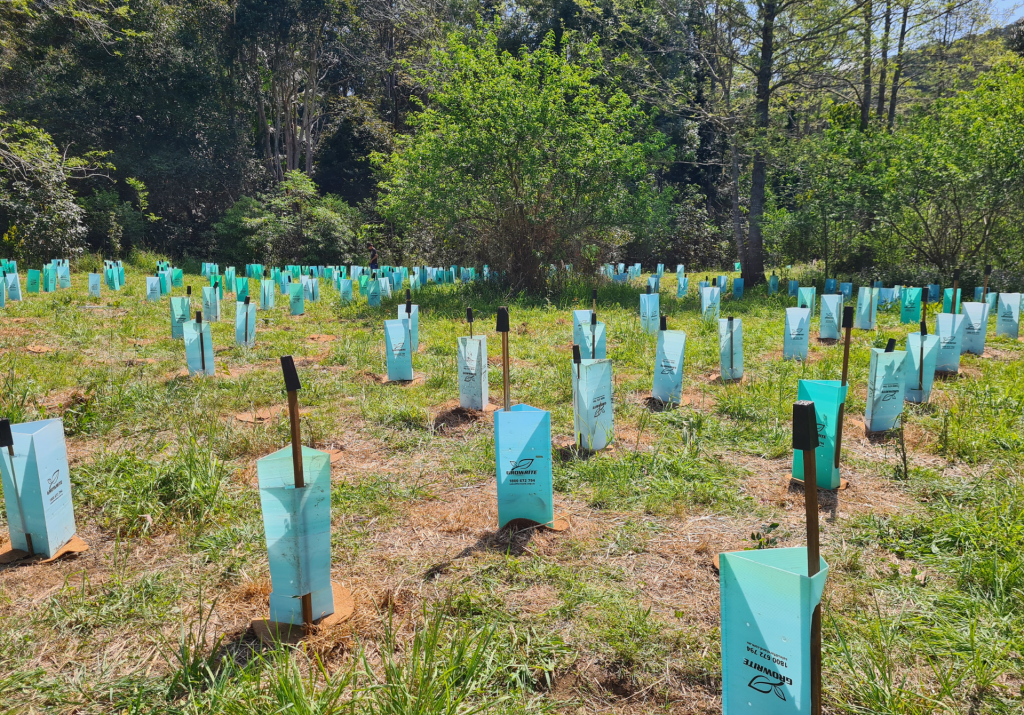
Many species face growing threats from land clearing for urban development, expanding road networks, and other human activities that break up and isolate crucial habitat. In the Sunshine Coast Hinterland area, logging and land clearing for agriculture and development have been the main causes of fragmentation, and many of these land use pressures remain today. Of the remaining pockets of forest, many remnants suffer from high levels of disturbance caused by invasive weeds and historical grazing, which impacts the suitability of habitat for local wildlife.
At Hinterland Bush Links, we are tackling these issues by working with local landholders and volunteers to restore native vegetation, manage invasive weeds, and create wildlife corridors that reconnect fragmented bushland.
Through our Koala Habitat Project, we focused on planting thousands of native trees, especially eucalypts, to expand and reconnect habitat for local koalas. By restoring these vital corridors, we give koalas and many other species such as the Greater Glider safer routes to travel, breed and feed, boosting their chances of survival in an increasingly developed landscape. Volunteers and landholders work together to target priority areas, link existing bushland, and ensure these restored corridors remain healthy into the future. You can read more about what this project has achieved in our Good News Story.
Trees also improve soil stability, reduce erosion, and protect waterways, while creating a more vibrant living landscape for people and wildlife alike.
Supporting Mental Health and Community Connection
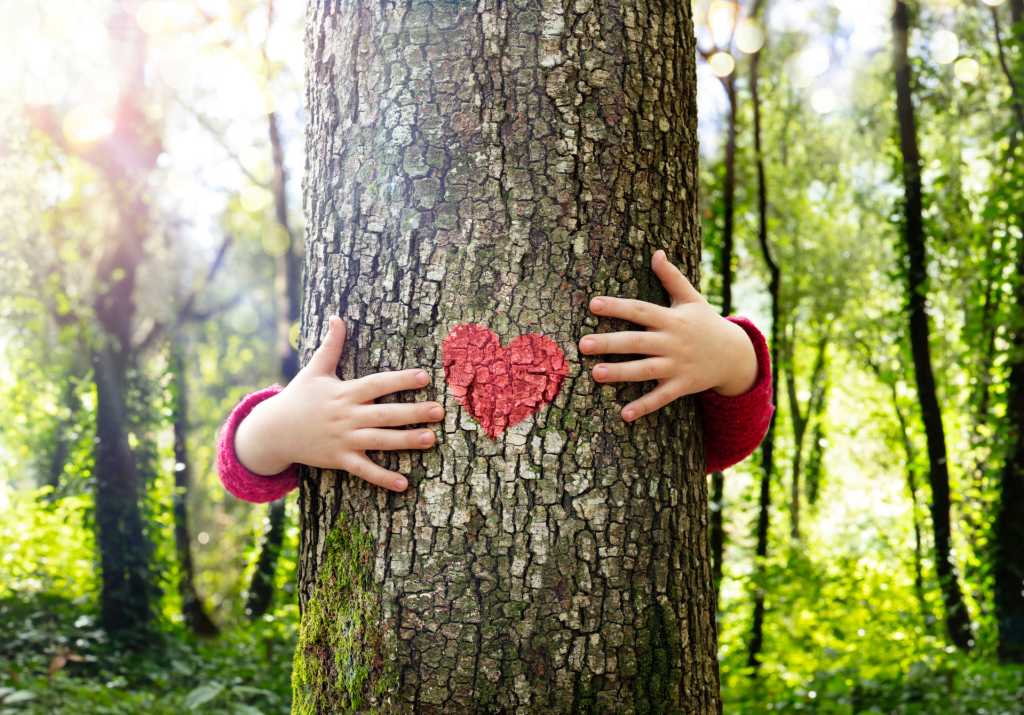
Tree planting does more than heal the land. When our community gets involved, it helps us too. There’s growing recognition that time spent in nature improves mental wellbeing. Getting outside, working with our hands, and connecting with others has been shown to reduce stress and boost mood.
Community planting days aren’t just about trees. They’re about people. They give local volunteers the chance to form friendships, learn about native plants and animals, and take pride in their contribution. For many, it’s a grounding experience that brings purpose and joy. Over the past year, we’ve held seven tree planting events, and we’re excited to keep the momentum going with a continuing schedule of planting days and restoration activities that welcome everyone to get involved.
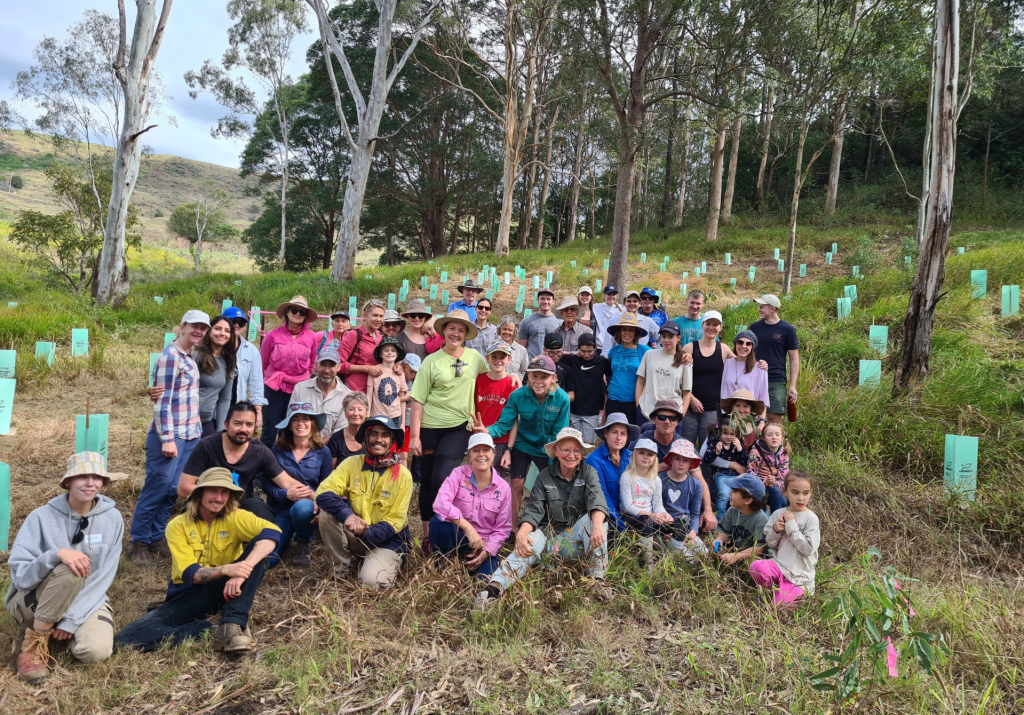
Trees and Climate: Natural Carbon Solutions
Trees are unparalleled in their ability to sequester carbon from the atmosphere and store it in their biomass, including trunks, branches, roots, and surrounding soil. Forests are the largest terrestrial carbon sinks on Earth, and their importance in climate change mitigation cannot be overstated. In fact, forests currently absorb about one-third of global fossil fuel carbon emissions, which equates to approximately 2.6 billion tonnes of CO₂ each year.
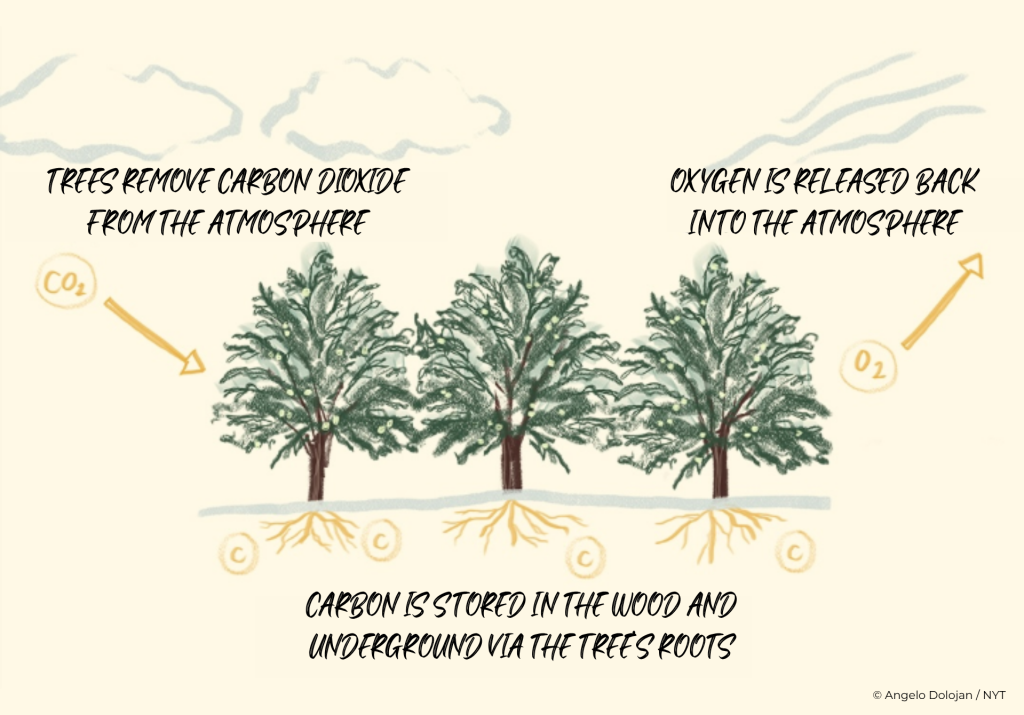
Compared to other types of vegetation, forests absorb more carbon and retain it for longer periods, making them critical allies in climate action. Planting native trees in degraded or cleared areas helps increase the long-term carbon storage capacity of the landscape.
At Hinterland Bush Links, we see native revegetation not just as a tool for ecosystem restoration, but as an effective, nature-based climate solution that benefits both people and planet. Through our community planting days over the past year, we’ve planted 1,425 new trees, which are expected to sequester around 25 tonnes of CO₂ each year, based on an estimated 80% survival rate as the trees grow and mature.
At Hinterland Bush Links, we believe every tree planted is a step toward a more connected, biodiverse, and climate-resilient future.
Whether you’re joining a planting day, caring for your backyard, or simply cheering on from the sidelines, your support helps grow a better future one tree at a time.
Further Reading and Resources
🌿 Biodiversity and Ecosystems
• Queensland Koala Conservation Strategy 2020–2025 – Outlines actions to protect and restore koala habitat across South East Queensland.
View PDF
• Environment and Liveability Strategy – Sunshine Coast Council (2017) – A long-term vision for protecting green spaces, biodiversity corridors, and sustainable growth in the region.
Read more
🧠 Mental Health and Community Connection
• Nature and Mental Health: An Ecosystem Service Perspective – Explores how time spent in nature improves emotional wellbeing and resilience.
Read article
• The Mental and Physical Health Outcomes of Green Exercise – A foundational study on how outdoor activities benefit mental health.
Read article
🌱 Climate and Carbon Sequestration
• Forests and Carbon Storage (IPCC, 2019) – Forests absorb around one-third of fossil fuel emissions globally.
View IPCC Report Chapter
• Tree Planting and Carbon Capture in the U.S. – Highlights how increasing forest cover can boost carbon sequestration.
Read article
• Carbon Accumulation in Forests vs Other Vegetation – A 2024 study confirming forests outperform all other land covers in storing carbon.
Read article
• Organisational Zero-net Emissions Plan – Sunshine Coast Council (2022) – Local strategy outlining the council’s pathway to net-zero emissions.
View PDF
